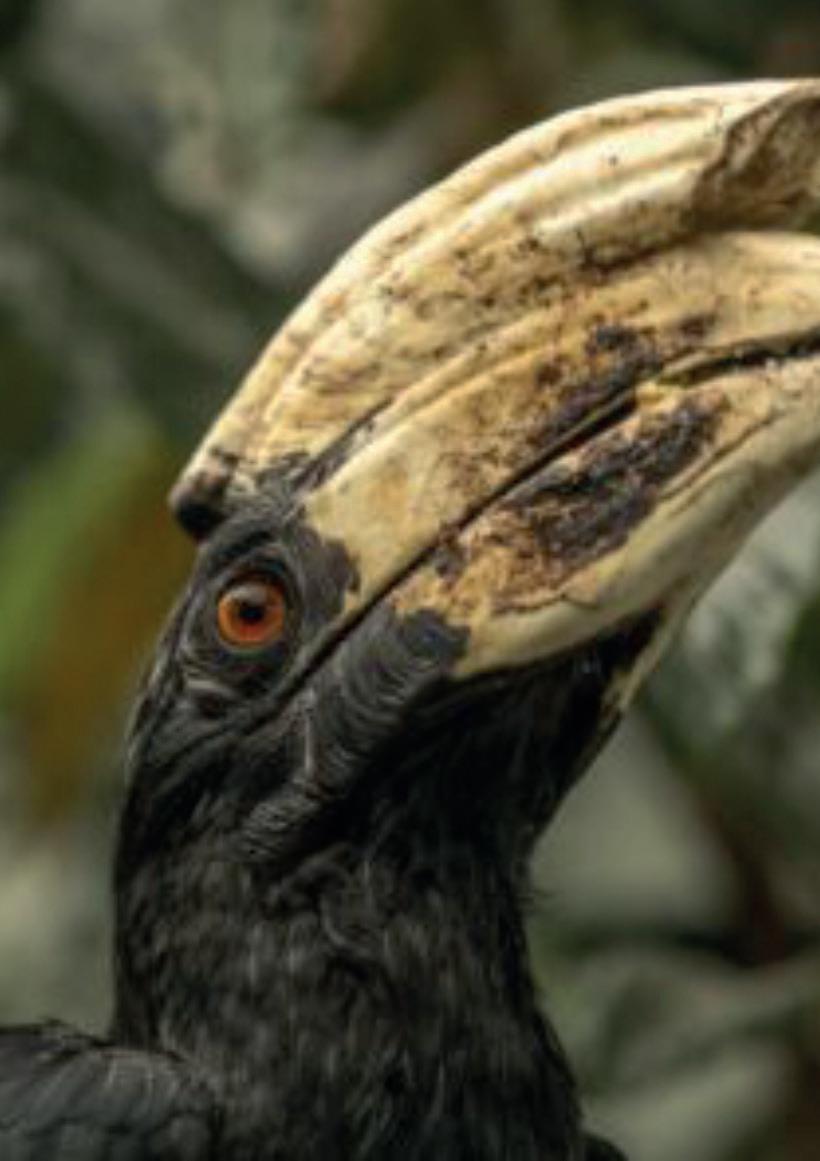
6 minute read
EXOTICS NEWS
The latest from the world of exotic animals
August 25th 2022, after eight days it was relocated via radio-telemetry some distance away and was sighted flying and foraging with a flock of native parrots before its signal was once again lost. A second birds` signal was also lost, it left the release area on September 6th 2022, but the next day this solitary macaw fell prey to an avian predator only a few kilometers from the release site.
Advertisement
Paradise Wildlife Park
Paradise Wildlife Park in Broxbourne, Hertfordshire have announced that their pair of Malayan black hornbills have successfully bred for a second time this year - which is unheard of in this species before. The first chick was parent-reared by female “Mulu” and male “Darwin” back in April, and now two more chicks are being reared. In European zoos there are 26 birds registered in the EAZA ex-situ breeding programme and these chicks are the only ones to be hatched this year within this programme.
Released Spix’s Macaws Died
Dr Cromwell Purchase, ACTP Director Brazil and Manager of the Spix’s Macaw Release Centre in the Caatinga announced the tragic loss of two released Spixs`s macaws.
One Spix’s macaw went missing on
Reintroductions are extremely challenging for any species, especially for one that was previously extinct in the wild. Although losses may inevitably occur, careful and meticulous planning and execution can help to greatly reduce or limit such. Indeed, losses themselves also present opportunities for continued learning and assessment of techniques and strategies. Dr. Cromwell Purchase explains: “What our results to date tell us is that the macaws are successfully adapting to the wild, the radio-tracking devices are working as designed, and our overall strategy has thus far proven sound and effective. The released macaws are gradually becoming independent; most remain together as a flock, and all are becoming increasingly adept at obtaining resources”.
It has since been announced that the second planned release of Spixs`s macaws will be around the 10th December 2022.
CITES 19th Meeting Conference of the Parties
Between 14th- 25th November in Panama City the 19th Meeting of the Conference of the Parties will take place to propose some changes. These include some upgrades of the following species to provide greater protection, potentially moving them from Appendix 2 to Appendix 1 ; the red-crowned roofed turtle (Batagur kachuga) , IndoChinese box turtle, Leith`s softshell turtle, (Common) hippopotamus, straw-headed bulbul and some South African populations of elephant. In addition, several reptile species are proposed to join Appendix 2 which aims to prevent further declines in their populations, some of these are presently freely traded by commercial reptile dealers, these include familiar species such as; Chinese water dragons, snapping turtles, mud/musk turtles, horned lizards and glass frogs.

Marwell Zoo
On the 27th September female white rhino “Sula” sadly died. The week before she had collapsed, but the keepers managed to get her up. She was 36 years old and had two calves at Marwell – one in 1999 and a second in 2003, she was a delight to work with, always friendly with the keepers, though she often used to push her old companion “Kiri” around a bit at times.
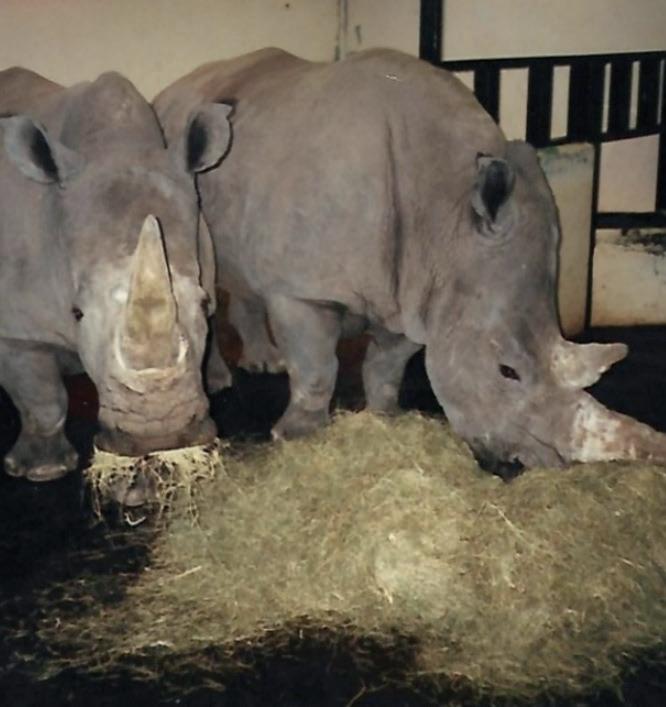
Seth Macfarlane, the creator of family guy and longtime supporter of ‘The Rainforest Trust’. The polka-dot patterned frog is a toxic species discovered by Dawn Recalde, a field technician of the EcoMinga Foundation. So far, four specimens have been found, all within just a few square meters of one another. “This is a very rare frog found only at high elevations in a remote part of our Machay Reserve (the subject of World Land Trust‘s “Forests in the Sky” appeal in 2015), so it took us these four years to find enough individuals to make a thorough description of it” writes Dawn in a blog post.
The patch of rainforest sits on a ridgeline of the Cerro Mayodormo, Ecuador. This secluded habitat is likely to harbour more unique species and The Rainforest Trust is continuing its work identifying new species in the region. Researchers are hoping to analyse the toxicity of the new species over the coming months.
Jurrasic Fossil Fish Found
A beautifully preserved, three dimensional, ferocious-looking fossil fish, has been unearthed from a Jurassic dig site, located on a grassy bank, behind a cow shed in the village of Kings Stanley just outside Stroud, in Gloucestershire.
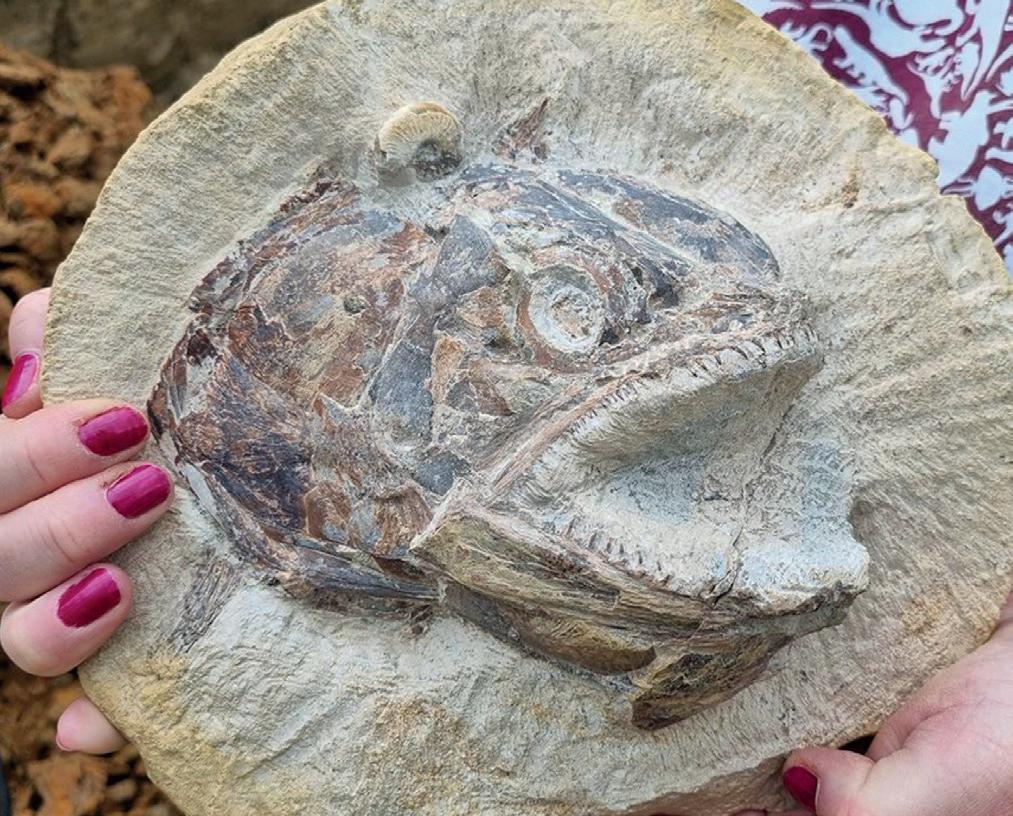
The landowner, Adam Knight, had no idea his English longhorn cattle were grazing on top of a rich fossil seam, recalling a time, 183 million years ago, when his farm would have been lying under warm tropical ocean waters.
Mr Knight gave permission to prolific West Country fossilhunters Neville and Sally Hollingsworth, and a team led from the University of Manchester, to investigate the bank further. They said "when we prepared this fossil, revealing its bones bit by bit, it was amazing because we suddenly realised its skull was uncrushed”. A digger was brought in to extract hundreds more of the nodules, which were carefully cracked open to see what they held inside. The tuna-like predator, named Pachycormus, was encased in one of the many limestone nodules that were falling out from an exposed clay layer. There is particular interest because the specimens were extracted from a rare UK example of a time slice in the early Jurassic - the Toarcian Stage. It is known for exceptional preservation, including of soft tissues, and the team has a fish, for example, in which it is possible to see the stomach contents.
The intention is to stage a public display of the fossils at the Boho Bakery Café, which is close to Court Farm, in October.
New Frog Species Named After ‘Family Guy’ Creator
A new species of frog has been described in the Ecuadorian Andes. Hyloscirtus sethmacfarlani has been named in honour of U.S film and television creator,
Uplist for Jumping Rat
In the 1990s Jersey Zoo (JWPT/DWCT) became the first institution to commence a captive breeding programme which was very successful. However a recent assessment of wild populations of the Malagasy giant jumping rat by Durrell Wildlife Conservation Trust has estimated the current population to be down to approximately 5,000 individuals. A combination of their low reproductive rate, habitat loss, with degredation and fragmentation of their environment over many years, has led to a decline of around 88% between 2007 and 2019. As a result the species status has now been upgraded from Endangered to Critically Endangered.
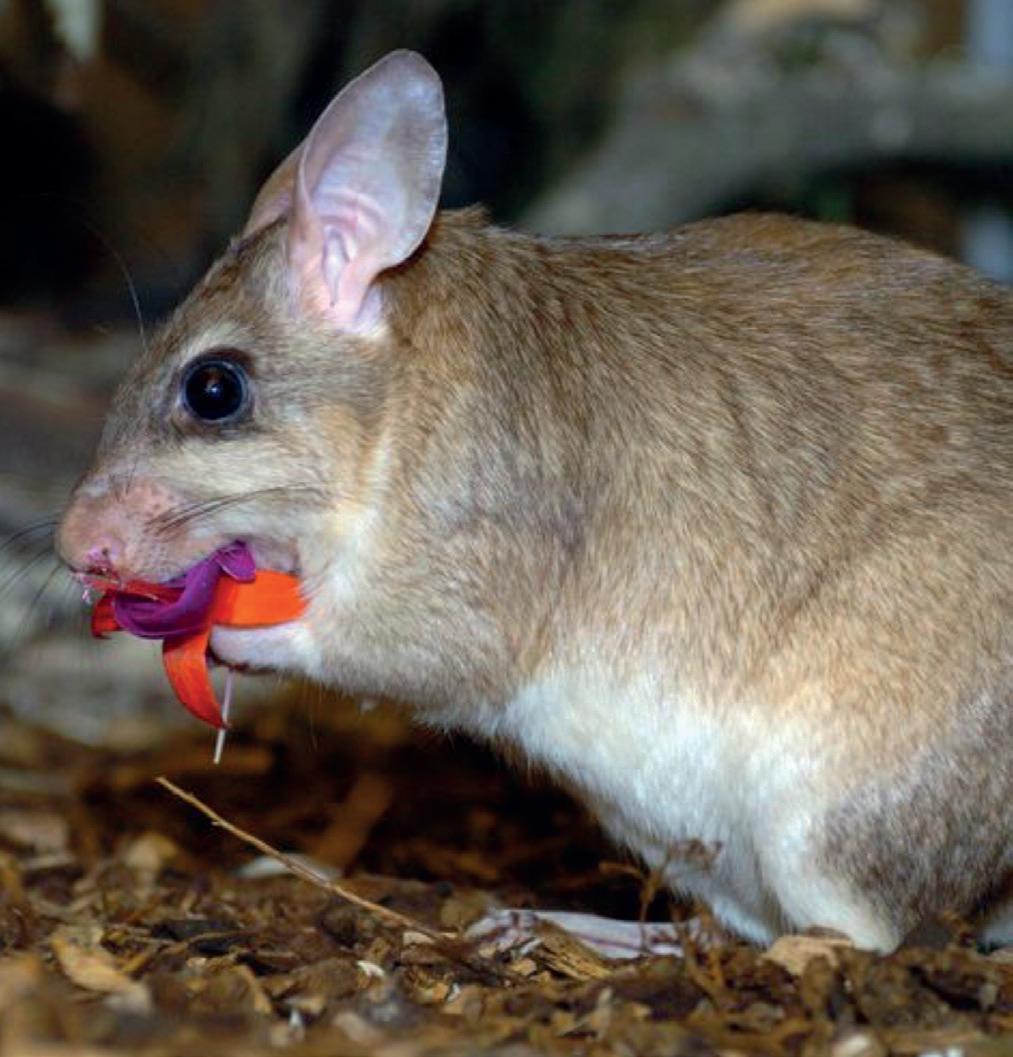
New Sloth Species Recognised
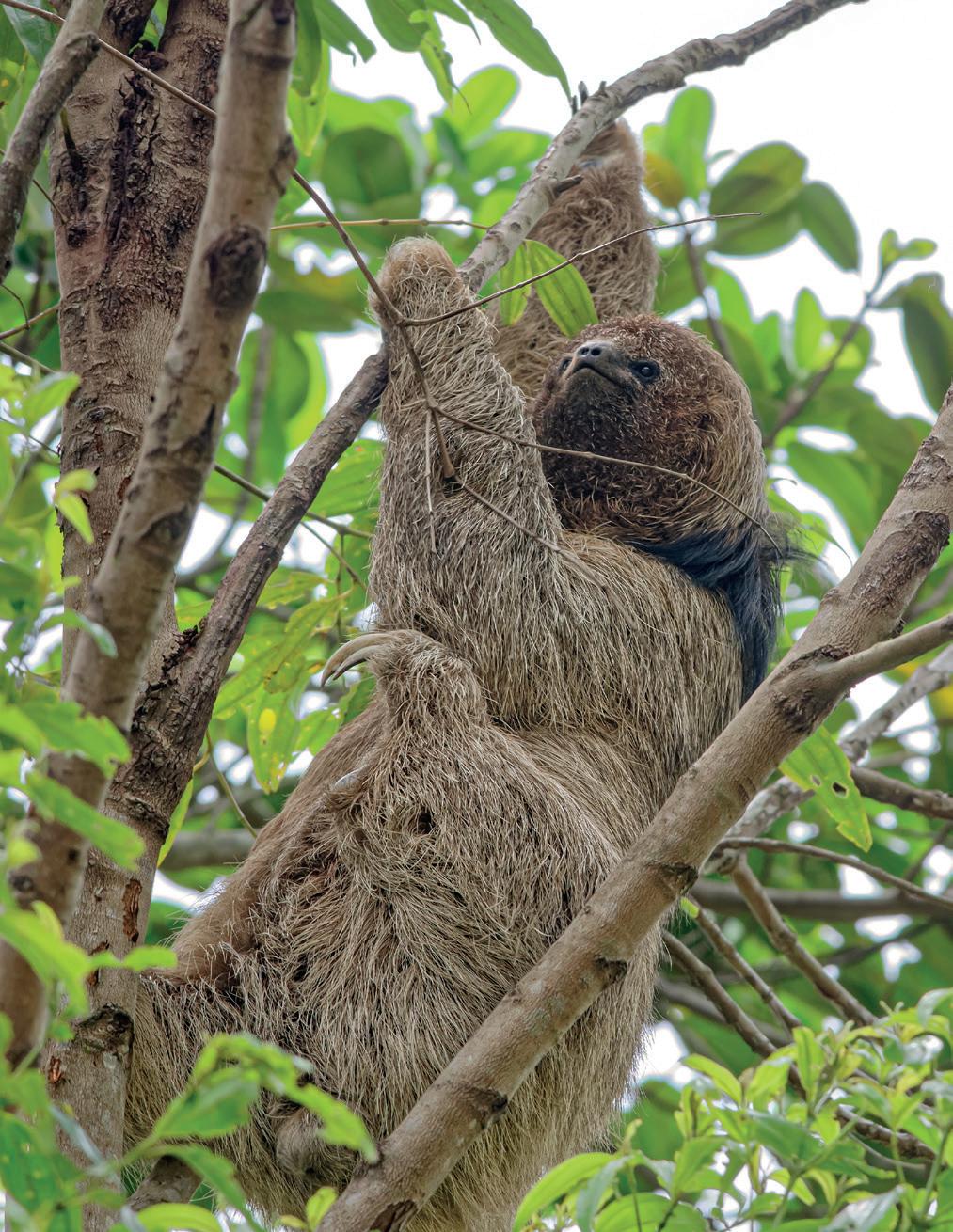
The Brazilian Atlantic Forest is home to two separate species of sloth - with heads that look just like coconuts, new research reveals. Found in a small region of this coastal forest, maned sloths were previously thought to represent a single species – but it turns out that those in the northern section of this range are genetically distinct from those in the south.
The maned sloth (Bradypus torquatus) was first described in 1811 – although British zoologist John
Edward Gray claimed to have discovered a second species in 1850, which he named Bradypus crinitus His assertions were later dismissed, with taxonomists agreeing that the specimen described by Gray was in fact B. torquatus, although this new study proves that B. crinitus does indeed exist.
Recently researchers conducted a morphological analysis of 24 maned sloths, some of which came from the northern states of Bahia and Sergipe, while the rest were from Rio de Janeiro and Espírito Santo in the south. Compared to their northern counterparts, southern sloths had flatter skulls, rounder jaws, and wider cheekbones. Genetic analysis of 55 maned sloths then revealed “substantial genetic divergence” between the southern and northern groups. Studying a group of collectively inherited mitochondrial genes, the researchers identified 86 mutational steps separating the two populations, and calculated that this divergence occurred around 4.24 million years ago. “Our integrative approach demonstrates that two species of maned sloth can be recognized: the northern maned sloth (Bradypus torquatus) occurring in the Brazilian states of Bahia and Sergipe, and the southern maned sloth (Bradypus crinitus), occurring in Rio de Janeiro and Espirito Santo states,” say the researchers.
The two species’ ranges are separated by the Rio Doce River, which also acts as a dividing line between related species. However, the researchers are unable to say whether the river provides a physical barrier or if contrasting climatic and geographical features on either side of this marker are responsible for these phylogeographic breaks. However, they do note that the B crinitus population on the southern side of the Rio Doce River would have been restricted to a “small climatically stable refuge,” and that confinement to this limited area may have contributed to the separation of the two species.








